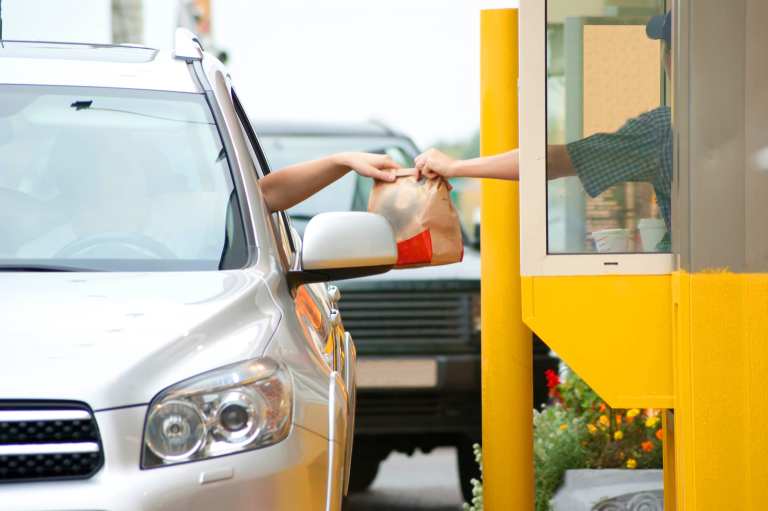Deep Dive: How Artificial Intelligence Makes QSRs Smarter

 AI and ML are some of today’s most hotly discussed technologies, sparking both optimism about a future less reliant on human labor as well as fears of job loss. QSRs have ample opportunities for such technologies. Hungry customers can use sophisticated AI tools to place orders by talking to voice assistants as if they were human cashiers, for example. AI is also working behind the scenes at restaurants to make daily operations more efficient, reducing the potential for human error and shaving precious seconds — or even minutes — off average turnaround times. These technologies have ample uses in the QSR space, but some deployments are having particularly pronounced effects in the space.
AI and ML are some of today’s most hotly discussed technologies, sparking both optimism about a future less reliant on human labor as well as fears of job loss. QSRs have ample opportunities for such technologies. Hungry customers can use sophisticated AI tools to place orders by talking to voice assistants as if they were human cashiers, for example. AI is also working behind the scenes at restaurants to make daily operations more efficient, reducing the potential for human error and shaving precious seconds — or even minutes — off average turnaround times. These technologies have ample uses in the QSR space, but some deployments are having particularly pronounced effects in the space.
AI-powered voice recognition
The most visible AI integration is voice-recognition systems, which have been deployed restaurants like Starbucks, Domino’s and Dunkin’. Chipotle also recently implemented AI-based voice-activated food ordering, which it plans to introduce to all 2,500 of its locations by the end of 2019. Its system utilizes a learning algorithm that offers phone customers suggestions, such as adding guacamole or sour cream, based on their prior orders. The tool was piloted at 10 Chipotle locations last year and is now being tested at 1,800 of its restaurants. The feature is meant to reduce the amount of time employees spend on the phone, allowing them to focus on their jobs and streamlining the ordering process.
Smaller chains are also looking into voice-activated ordering systems. Good Times Burgers & Frozen Custard, a 36-location chain in Colorado and Wyoming, recently installed AI voice systems in its drive-thrus, resulting in a 10 percent to 25 percent reduction in average wait times.
“While our AI is carrying on a conversation with the customer, the employees are listening to the exchange and actually preparing the food,” Good Times’ founder, Rob Carpenter, told Northwestern University’s Medill News Service. “So, we are seeing a lot of situations that, by the time the driver leaves the drive-thru speaker and pulls up to the window, the employee is already walking over with their food ready to hand over.”
Not only did this make customers happier, but it also let the QSR process more orders per hour — a key metric for drive-thrus. Studies have found that up to 70 percent of fast food orders come from drive-thrus, so every second counts.
Carpenter added that the system also boosted employee satisfaction by reducing frictions between them and customers. AI systems do not grow bored with introducing themselves hundreds of times per day and can deal with difficult customers that would frustrate human workers.
AI at self-service kiosks
QSRs are leveraging self-service kiosks as another AI-powered ordering solution, complementing voice-activated phone and drive-thru ordering. Fast food giant McDonald’s announced in a January earnings call that most of its $2.4 billion investment in 2019 would be devoted to its kiosk-centered “Experience of the Future” store design. Panera Bread, Taco Bell and Wendy’s are also preparing to deploy kiosks, while Shake Shack has had a cashless kiosk-only storefront in New York City since 2017.
Automated kiosks not only help speed long lines, but they can also remember frequent visitors’ preferred orders and dynamically upsell them on higher-margin menu items. The AI can recognize the absence of an item, such as a milkshake that a frequent customer typically orders, and ask the user if they want to add it.
The value of the global self-service kiosk market is expected to grow by $2.05 billion between 2019 and 2023, underlining the rising demand for automated services in QSRs, retailers and beyond.
Behind-the-scenes AI capabilities
AI and ML solutions can also help with back-of-house operations, such as scheduling — a logistical nightmare that’s well known to anyone who has worked an hourly position. Handling on-call shifts, predicting the number of employees necessary during certain times and allowing employees to swap shifts can be complex and time consuming.
AI offerings can algorithmically determine schedules with employee input while also tracking individual employee performance when scheduling. It could determine which staff member is best at upselling customers to higher-margin menu items, for example, and assign them to busier shifts where they have more interaction with customers.
These tools can also help with inventory and purchasing by integrating with QSRs’ POS systems, enabling it to automatically determine what needs to be restocked. This reduces guesswork as QSR owners no longer have to determine which items will be more popular and require larger inventory orders. Such offerings can also ensure that staff are adhering to portion sizes and prevent embezzlement.
QSRs are just scratching the surface when it comes to AI applications, and this nascent technology is sure to have many more use cases in the future.